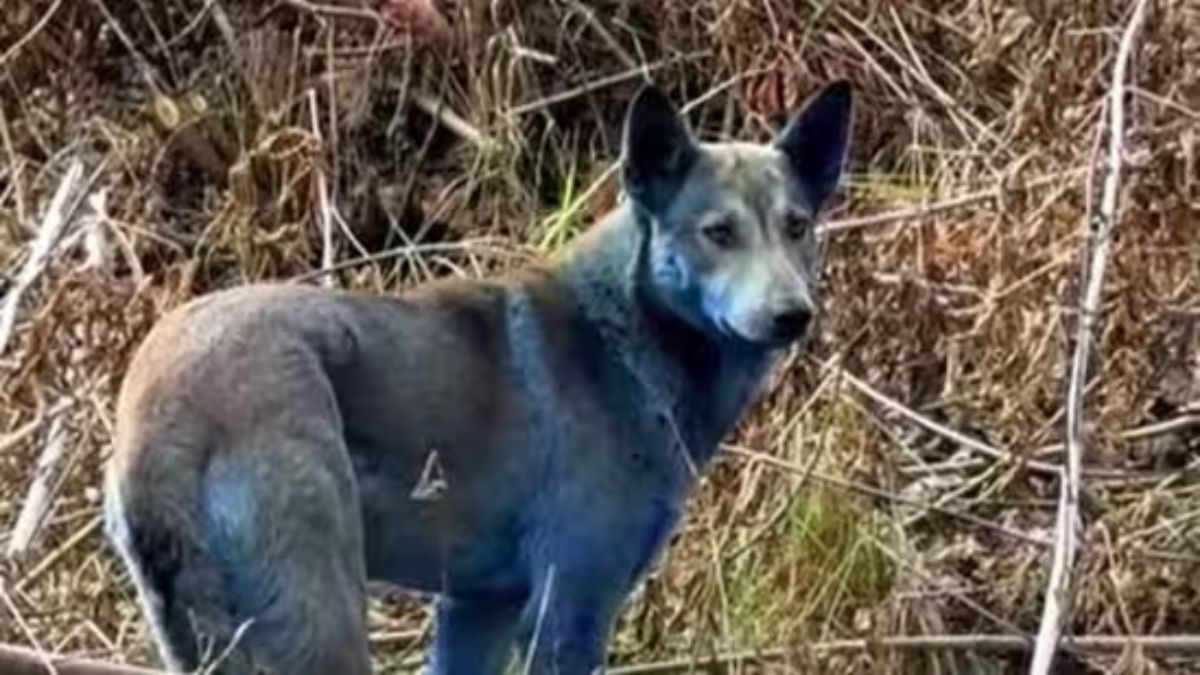Chernobyl has long been a place that sparks curiosity, from eerie deserted towns to wildlife thriving against all odds. But now, the site of the world’s worst nuclear disaster has thrown up another surprise.
Pictures of stray dogs with bright blue fur have started circulating online, leaving locals puzzled.
A group called Dogs of Chernobyl, which looks after the stray population in the exclusion zone, recently shared a video showing several dogs in striking shades of blue wandering near abandoned buildings.
According to them, the sudden change happened within just a week, and no one is entirely sure what’s behind it.
Here’s what’s going on
Blue dogs spotted in Chernobyl
Photos of bright blue dogs wandering through the deserted streets of Chernobyl have gone viral. These animals are believed to be the descendants of pets left behind after the 1986 Chernobyl nuclear disaster.
The organisation posted a video on Instagram showing several dogs with striking blue coats.
“Blue dogs found in Chernobyl. A very unique experience we have to discuss,” the group wrote. “We are on the ground catching dogs for sterilisation and came across three that were completely blue. We are not sure exactly what is going on.”
Since 2017, Dogs of Chernobyl, under the Clean Futures Fund, has been providing food, medical care, and sterilisation to over 700 stray dogs living within the 18-square-mile exclusion zone.
Despite their strange new appearance, the blue-coated dogs reportedly appear “active and healthy,” they added.
What’s behind the blue hue?
Caretakers believe the dogs may have come into contact with some unknown chemical substance, possibly something in the soil or water, that caused their fur to turn blue.
Scientists are also looking into other possibilities, such as exposure to industrial chemicals or heavy metals present in the area. To get to the bottom of it, researchers are now collecting fur, skin, and blood samples from the animals for testing.
Locals said the change happened almost overnight. “We do not know the reason and we are attempting to catch them so we can find out what is happening. Most likely they’re getting into some sort of chemical,” the organisation wrote in their post.
Experts suspect that exposure to substances like cobalt, copper sulphate, or other industrial waste might have stained the dogs’ fur. Such compounds are known to produce vivid colours when animals come into contact with contaminated surroundings.
For now, though, the mystery of Chernobyl’s blue dogs remains unsolved until proper tests reveal the truth.
How Chernobyl affected wildlife
In the days after the Chernobyl disaster, radiation levels were so high that plants withered and forests near the reactor turned brown.
Wildlife too faced devastating losses. Radiation caused genetic mutations, reproductive issues, and a sharp drop in animal populations. Birds, small mammals, and fish in nearby rivers suffered the most in the early years.
But over time, nature began to take over again. The Chernobyl Exclusion Zone slowly transformed into an unlikely wildlife haven.
Today, wolves, bears, lynxes, bison, and even rare Przewalski’s horses roam freely. Eagles and owls have returned, and the dogs continue to survive against all odds.
Even now, radiation levels in parts of the zone remain up to six times higher than what’s safe for humans. Yet life persists. A 2024 study by Columbia University found that the stray dogs carry unique genetic mutations that may help them withstand constant exposure to radiation and heavy metals.
Most live in packs for safety, while some have bonded with the workers and scientists who still visit the area.
With input from agencies


)

)
)
)
)
)
)
)
)



